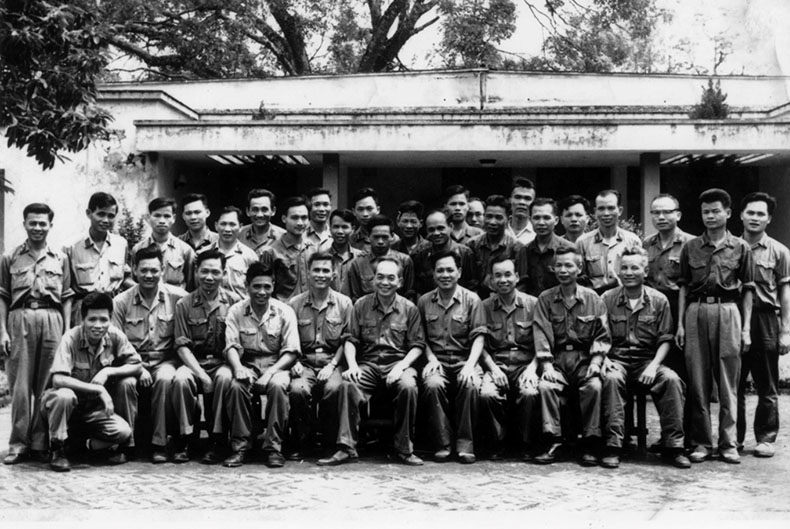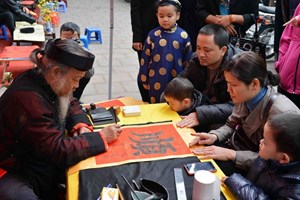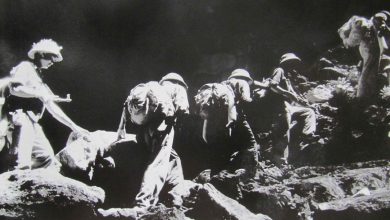Memories of Võ Nguyên Giáp at D67 Building and Bunker.
During the Resistance War against American Imperialists and Liberation of the South (1954-1975), the Hanoi Ancient Citadel served as the Headquarters of the Vietnam People’s Army. It was here that that the Central Military Commission and the General Staff (Zone A of the Ministry of National Defence) worked and many confidential meetings of the Politburo took place. General Giap, in the role of Secretary of Central Military Commission and Minister of Defence, Commander-in-Chief of Vietnam People’s Army also worked here. Before 1968, General Giap’s working room was based on the second floor of the Dragon House. Between 1968 and 1980, he worked in Building D67.

Documentary photo: The Central Military Commission held a meeting on March 31, 1975 to decide on a general offensive to completely liberate the South as soon as possible, preferably in April 1975. The motto was “Fast, bold, unexpected, and surefire”.
At the Headquarters, under the leadership of the Politburo and the Central Military Commission, General Vo Nguyen Giap directed the making and adoption of many important decisions for the Southern battlefields and battlefields in Indochina countries.
Besides the US political and military interventions in the South that ran counter to the Geneva Agreement, in 1959, the Republic of Vietnam government’s policy of denouncing the communists and eliminating the communists also caused damage and heavy losses to the southern revolution. Under the leadership of the Party, particularly President Ho Chi Minh and in his capacity as Secretary of the Central Military Commission, General Vo Nguyen Giap decided to establish the Truong Son strategic support line on land (Delegation 559) and sea transport routes (Delegation 759) to support the South.
In 1972, hoping to gain the upper hand in the negotiation table by forcing the Democratic Republic of Vietnam to accept the conditions set out by the US, the Nixon administration decided to conduct a strategic air raid in which flying fortresses B-52 were deployed to destroy Hanoi and other cities and provinces from 18 to 29 December 1972.
During those 12 fierce days and nights, General Vo Nguyen Giap and General Van Tien Dung spent all their time at the headquarters. They closely monitored the progress of the campaign and promptly directed the Air Defense – Air Force of Hanoi and the northern provinces to thwart the US plot of using the US B52 as a strategic card air on the table. In his memoirs, the General Giap wrote: “On the night of 26 December 1972, the enemy deployed B52 aircraft hundreds of times to brutally attack residential areas in the inner Hanoi. There were times when the fortified command bunker of the Headquarters shook like in an earthquake.” (Complete Memoirs of General Vo Nguyen Giap)
Towards the end of 1974, General Vo Nguyen Giap and the Politburo quickly grasped the changing trend of the battlefield situation in the South and promptly issued corresponding strategic and key directions.
At the expanded Congress of the Politburo which took place between 18 December 1974 and 8 January 1975, given the new developments in the Southern battlefield, especially the liberation of the first Southern province of Phuoc Long, the Politburo unanimously decided to adopt the 2nd Strategic Plan in 1975, 1976 which emphasized that if the opportunity presented itself at the beginning or the end of 1975, then we should try to liberate the South right in 1975.
In order to strengthen the leadership and command of the strategic offensive of Spring 1975, General Van Tien Dung – Chief of the General Staff was secretly dispatched to the Central Highlands front following a decision of the Politburo and the Central Military Commission to help organize a division representative of the Central Military Commission and the General Command in the Southern battlefield.
“Whoever takes control of the Central Highlands will take control of Vietnam and Indochina as a whole”, in the words of General Giap.
When the Central Highlands campaign was on the verge of victory, at the General Headquarters (Building D67), the Politburo and the Central Military Commission urgently held a meeting on March 18, 1975. The conference decided to “Transform the strategic attack into a strategic general offensive to liberate the South in 1975, instead waiting until 1976“.
At the same time, the Politburo decided to open the Quang Nam – Danang (or Quang Da for short) Front. Lieutenant General Le Trong Tan was appointed by the Central Military Commission as Commander of the Quang Da front, directly in charge of liberating Da Nang.
Given the rapid and strong developments on all fronts, on 31 March 1975, the Central Military Commission held a meeting and decided to launch a general offensive to completely liberate the South as soon as possible, preferably in April 1975. The motto is “Fast, bold, surprise, and surefire“.
On 2 April 1975, at the General Headquarters, after hearing the report on the battle of Da Nang, General Giap gave the following direct instructions to Lieutenant General Le Trong Tan: “In addition to conveying the orders of Military Region 5 and Command of the Navy, it is essential to organize the offensive to liberate the islands, especially the Trường Sa archipelago.”
On 7 April 1975, at the most urgent moments for the historic battle, it was here that General Vo Nguyen Giap issued the secret order that read “Be fast and faster, bold and bolder. Take advantage of every hour and minute, rush to the front, liberate the South. Be ready to fight and win the final battle”.
At the General Headquarters General Vo Nguyen Giap and his comrades in the Central Military Commission followed every step of the rapid developments of the fronts, promptly giving appropriate instructions for the attack directions. “On those days, I remained at Headquarters without going home, even though the two places were only a few hundred meters apart. In the office, the other officials and comrades have prepared for me a small bed. In addition to the maps hanging on the wall, I put a military map of the South right under the large glass on the table to facilitate my monitoring and thinking. (Complete memoirs of General Vo Nguyen Giap)
Those flexible and timely instructions of the Politburo and General Vo Nguyen Giap were able to pull the total strength of the people and the entire nation to bring about the victory of the Ho Chi Minh Campaign which liberated the South and reunify the country on April 30, 1975.

General Võ Nguyên Giáp posing in a picture with core officials and cadres in front of Building D67 on 30/4/1975.
Building D67 was closely associated with General Giap during the most difficult but glorious days of the resistance war against America for national salvation. This place witnessed the Central Military Commission and the General Staff (Ministry of National Defense) working with extremely focused mind to make important strategic decisions and resolve to liberate the South and reunify the country. The General’s office at Building D67 was simply furnished, and there were times when the General works here all day and night, devoting all his heart and mind to the final strategic battle. This place also witnessed the heroic moments of the Headquarters on the day of great victory. Later, in his memoirs titled the General Headquarters in the victorious spring, the General Giap wrote: “The house, which was under the dense foliage, featured a number of solid working bunkers where many secret meetings were held, including those of the Politburo and the Central Military Commission. It also witnessed a decisive historical event when for the last time, the will and intellect of the Party were highly demonstrated as they mapped out the plan for final and complete victory”.
Today, the Central Military Commission Building and Bunker (D67) becomes an important revolutionary relic in the Thang Long Imperial Citadel World Heritage Site.
On the occasion of the 110th birthday of General Vo Nguyen Giap (August 25, 1911 – August 25, 2021), Thăng Long- Hanoi Heritage Conservation Center organized the exhibition “General Vo Nguyen Giap – the legendary general” in an online format. The exhibition once again recounts the heroic memories of the Vietnamese nation through the image of the general of the people, the Big Brother of the heroic Vietnamese people’s army as he was often affectionately called. Through the exhibition, the Vietnamese people and foreign visitors can learn about the most authentic historical memories at the Headquarters (Zone A, the headquarters of the Ministry of National Defense), especially Building D67, where there were simply furnished working rooms closely associated with the life of General Vo Nguyen Giap.





